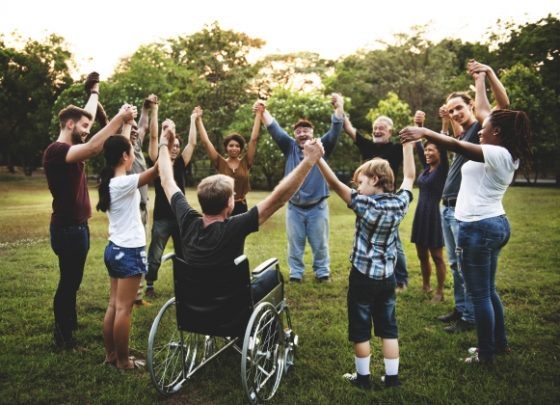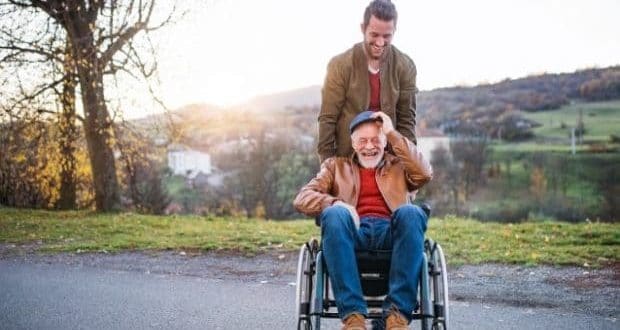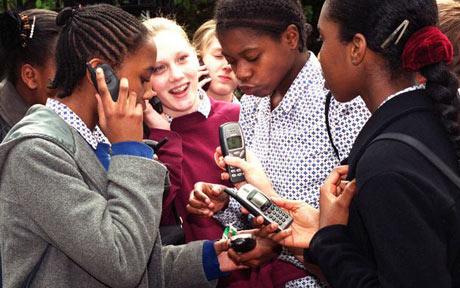Seven Ways To Help Disabled People
It’s not easy living with a disability, and sometimes other people even make it harder. Some of us feel uncomfortable being around disabled people because we are not sure how we should act.
Well, in essence, disabled people and children (especially children) want to be treated as equals, just like everybody else. Of course, there are a few rules on how to help disabled people without hurting their feelings, so no harm in checking them out and making things easier for everybody.
Ask Before you Help
Many people feel tempted to automatically help a disabled individual, even though the person didn’t ask for help. You shouldn’t do that – a disabled person will ask for help if they need it, just like anybody else. By assisting them without asking, you are sending them a message that they can’t take care of themselves and can’t do anything on their own.
This is especially detrimental to confidence in disabled children. At that sensitive period, a child with a disability needs to know he/she is perfectly capable of being independent (at least in most situations).
Don’t Lean on Wheelchairs
One of the most de-humanizing things you could do is to lean on the person’s wheelchair to rest for a bit. You wouldn’t lean on a person who is standing, right? Individuals in wheelchairs are not moving furniture, so you can’t use their wheelchairs to rest your feet or to lean your arms on.
Don’t Overdo the “I Admire You” Statements
The problem with statements like “You are such an inspiration” is they are usually given to disabled people when they do something normal like buying groceries in a store or pouring themselves a glass of water.
Children are especially sensitive to statements like these because they mean they are different from other kids, even though they try hard to be like everybody else. Every disabled person lives normally, just like any of us, and they don’t want a medal for that.
People close to them, especially parents of children with disabilities, know best when praise is suitable and welcomed – everybody wants to be praised when doing something great, and not for doing something trivial.
Offer Assistance for the Family
Sometimes, the best thing you can do to help a disabled person is to offer your help to people close to them. Think about parents with a disabled child. It’s not easy to raise kids, but these parents’ challenges are even greater. So, ask if there’s anything you can do for them.
Alternatively, you can point them in another direction – tell them if there’s an organization that assists disabled people and children. For example, disabled individuals in the US can turn to Buddy Break organization, where they are provided a buddy, which means a lot, especially to kids. Similarly, NDIS Australia assists disabled individuals in terms of social support, nursing, personal care, and many other forms of assistance.

Invitation to Socialize
Every person with a disability needs to be included in society and have regular activities with others, especially a child. No child should be isolated in the name of their protection. They need to be included in extra-curricular activities and participate in games and other social events.
So, you should approach a disabled adult or a child just like you would anyone else. Ask them if they would like to join you in doing whatever it is that you’re doing. Don’t automatically isolate them “for their own good”.
Respect and Understand Confidentiality
People with disabilities have the right to privacy, so you shouldn’t expect them to talk about their disability with you. It is up to their free will to choose whether they want to talk to you about it.
If they do, you shouldn’t assume you have permission to talk about it to other people. And always ask permission to discuss disability before you move on to it.
Identify Yourself to a Visually Impaired Person
Always remember individuals with visual impairments can’t see physical cues as you do. It’s important to be verbal when spending time with them, not only in a social situation but also when trying to help them. When you approach a visually impaired person, introduce yourself first – that will make them feel more comfortable with you.
Keep Eye Contact with a Deaf Person/Person who has Hearing Loss
In case you want to communicate with a deaf person who is accompanied by their sign language interpreter, don’t make a mistake of dehumanizing the person by talking to the interpreter, and not them.
Always talk to them like with any other person, and the interpreter will know how to take it from there. By doing this, you will avoid excluding the person you actually want to talk to from the conversation.
Final words
We all want to feel appreciated and loved, and people and children with disabilities are no different. Looking at them as any other person will make things easier for both of you, and make them feel normal, just as they should feel.
Learning disabilities can affect your child’s ability to use and understand both written and spoken language, focus their attention, do mathematics or move in a coordinated fashion. Does your child have a learning disability? Here’s all you need to know.






